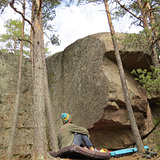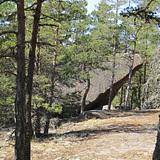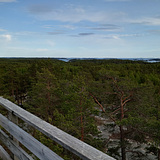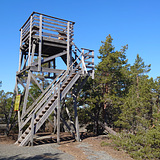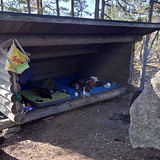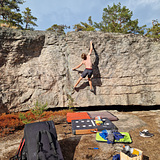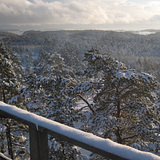The area lies along a several hundred meters long side of a "mountain" with heights between 3-9 meters, with a few big boulders also scattered in the area. The rock type differs a lot between sections, but is mostly very friendly on the skin and fingers. The typology also differs with everything from steep overhangs, slab and smooth rock faces with ultra small crimps found. This crag has something for everybody within a small area; technical delicate climbing, nice easy problems, highballs and overhangs. A great place for a day out with your climbing gang as it caters to everyone whether it is different types of climbing or different difficulties you are after, everyone will find something to send. With few problems established there is also an abundance of possibilities for first ascents, and hardly any brushing or cleaning will be needed as there is almost no moss covering the rock. The area dries quickly and in almost all sections the landing is supreme, giving confidence for boulders of all heights. The climbing area faces west-south west so it can get hot in the afternoon/evenings if it is sunny.
Climbing in Vargberget was originally found by Samuli Lehesaari in 2006. Most of the obvious routes were established around 2006-2010 mainly by Samuli Lehesaari, Jarkko Reponen and Peetu Ojalehto. Most of the routes, including the crack lines, are climbed as boulder, but there are also a couple of trad first ascents.
---
https://nagubor.fi/tjanst/vargberget/
(Swedish-English translation by Google):
The wolf is a mythical animal. Even today, it is still debated. Vargberget in Mattnäs was a real wolf trap in the 19th century, when there were many wolves in Nagu. The villagers chased the wolf up the mountainside. On the other side, death awaited when the wolf fell down the cliff. Already in the 14th century it was legislated that the common people should stick to wolf nets and wolf pits. The wolf pit was dug to trap the wolf. On Vargberget you can also see the flat ledge where dancing took place at the turn of the century.
